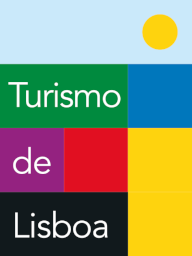Portuguese Paving Route
The History of Portuguese Paving
As the ultimate symbol of Portuguese culture, appreciated all over the world, the art of the Portuguese paving is one of Lisbon’s greatest attractions. The black and white tapestry embellishes the city with distinctive patterns, which mostly depict the epic voyages of the Portuguese discoveries.
The limestone cobble pavements appeared in the 15th century, but it was during the first half of the 19th century that Lisbon’s physiognomy began such a profound transformation the city would never be the same again. It was also from this time onwards that true masterpieces were created in the pedestrian areas of Portuguese overseas territories such as Macao, Brazil, Cape Verde, Angola, Mozambique, India or Timor.
The whiteness of the limestone, interlaced with black basalt or limestone of the same colour, refined urban public spaces and established an ideal for the modernization of cities.
Stones were cut to the appropriate dimensions thanks to the work of pavers, who created abstract compositions in these mosaics, with geometric or even figurative designs. The limit? The artists’ imagination.
Hidden secrets of this artistic manifestation reveal themselves at every step. Foliage, boats, faces, animals, mythological beings and fruits are some of the motifs surreptitiously introduced by pavers amongst the repeated patterns with the intent of signing their work.
From the first craftsmen to contemporary visual artists, renowned exemplars of mosaic paving in Portuguese territory include works of art by Eduardo Nery, Fernanda Fragateiro, Fernando Conduto, João Abel Manta, Maria Keil, Pedro Calapez, Pedro Proença, Porfírio Pardal Monteiro, Rigo, Xana and even Vhils, who through this tradition found a way of paying tribute to Fado singer Amália Rodrigues.
The first decorative stone carpet ever created, which exhibited a vibrant zigzag within St. George's Castle, descended the hill to settle in Rossio, where to this day one can still appreciate the Mar Largo (“Broad Sea”), an alternating sequence of white and black waves honouring the Portuguese discoveries.
In the following years, the most noble parts of the city were also paved with magnificent decorative motifs. From Avenida da Liberdade to Cais do Sodré, from Largo do Carmo to Chiado, from Praça de Camões to Príncipe Real, from Praça do Município to Praça do Comércio, from Estrela to Belém’s riverside, the city covered itself in fantastic stone carpets. Some of the first exemplars still maintain the original patterns and can still be observed today.
At the end of the century, Expo 98 would create the ideal conditions for a new generation of artists to rethink Portuguese paving with new plasticities. The Eastern part of the city displays some of the most extraordinary works of art, where creativity and tradition come together to form images of monsters and marine motifs.
The versatility of Portuguese artistic paving, and its ability to reinvent itself, remains a source of inspiration for many other fields of artistic creativity which go beyond the ground we tread.
